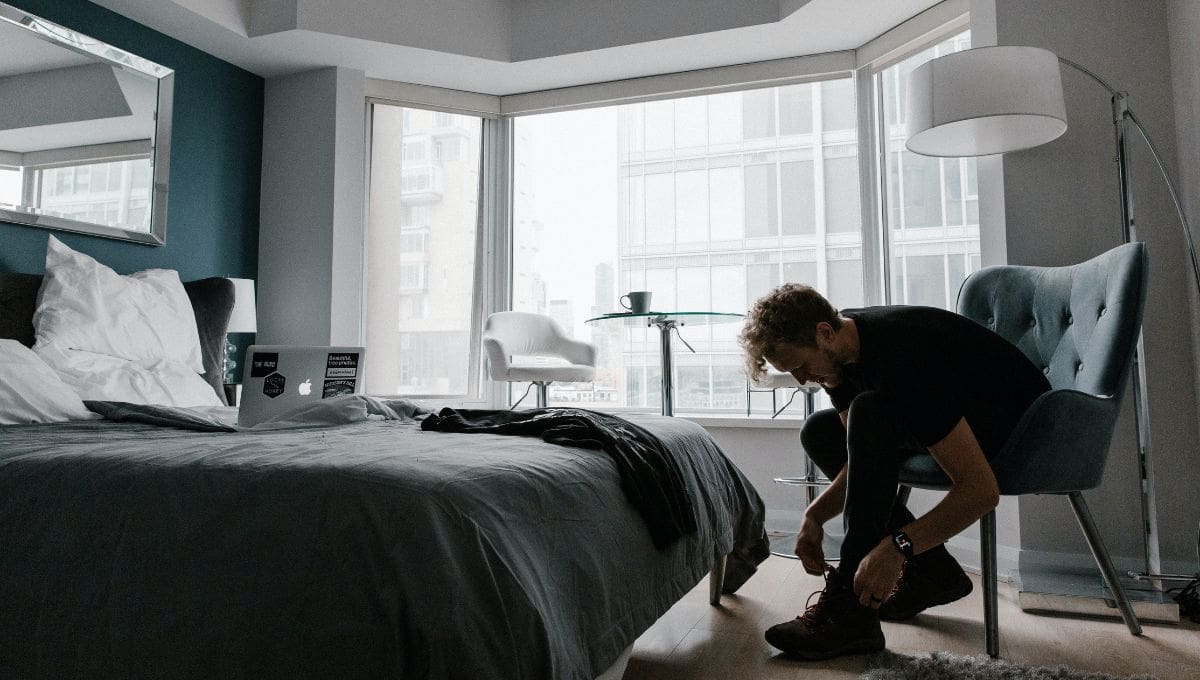How to design the best morning routine for great health and productivity? Keep scrolling to find out.
As soon as you wake up, there are a couple of things you can do to make your day better. And we are not talking only about feeling productive, but also in terms of your health and fitness. Establishing a morning routine can benefit you in many ways.
- Promotes better physical health: A good morning routine can help you prioritize your physical health. For example, incorporating exercise, stretching, or yoga can help improve flexibility, increase blood flow, and boost metabolism. Eating a healthy breakfast can also provide energy for the day ahead and help regulate blood sugar levels.
- Reduces stress and anxiety: Starting your day with a structured routine can help reduce feelings of stress and anxiety. It can create a sense of calm and control over your day, which can have a positive impact on your mental health.
- Increases productivity: A consistent morning routine can help increase productivity by setting the tone for the rest of your day. It can help you focus on important tasks and reduce distractions, which can lead to better work performance.
- Creates a sense of accomplishment: Completing tasks in the morning, such as exercise or meditation, can provide a sense of accomplishment and motivation for the rest of the day. This can help improve self-esteem and overall well-being.
So it only makes sense that you clicked here to find out how to design the best morning routine to start the day the best way possible – every day. And that is what Andrew Huberman can help with.
Andrew Huberman, Ph.D., is a neuroscientist and tenured Professor in the Department of Neurobiology at the Stanford University School of Medicine. He has a YouTube channel named Huberman Lab with over 3 million subscribers where he talks everything about the brain and, often enough, how to improve one’s health and fitness with it.
Check out what he had to say about designing the best morning routine.
 Source: Benjamin Wedemeyer on Unsplash
Source: Benjamin Wedemeyer on UnsplashHow To Design The Best Morning Routine For Great Health and Productivity
First, you need to aim to get a good night’s sleep as often as possible. Huberman says that you should try to get a good night’s sleep 80% of the time. “The other 20 per cent I hope you’re not getting good sleep for good reasons.”
Here is how you should design the best morning routine for great health and productivity:
- Get natural light in your eyes within 1 hour of waking up (5-10 minutes without sunglasses) – if you wake up before the sun rises, turn on some lights around you and get natural light as soon as it is available (even when it is cloudy you should do this)
- Delay intake of caffeine by 60-90 minutes – if you are feeling sleepy when waking up, delaying taking caffeine can hinder the “caffeine crash” you might get in the afternoon
- Exercise in the morning – this can clear out adenosine which is what might be giving you the feeling of tiredness in the afternoon
- Keep the room with a relatively low temperature – this will allow your body to rest easier and you will fall asleep faster
- Try cold showers every once in a while – aim for very cold showers (45 Fahrenheit / 7 Celsius) for about 1-3 minutes regularly. This will increase dopamine and epinephrine release, an adrenaline rush, that is similar to feeling ecstatically happy.
By doing these things above, natural light, exercising, increasing your body core temperature with a cold shower, “you created a summer month inside your body.”
To fully understand what Andrew Huberman says, click on the video below.
VIDEO – How To Design The Best Morning Routine For Great Health and Productivity
What Happens if You Wake Up at 5 am Every Day for 30 Days?
8 Morning Habits to Lose Belly Fat FAST
5 Evening Habits That Will Skyrocket Your Productivity
14 Exercise Myths Debunked by Physical Therapists
How Often Should You Work Out?
How often you should work out depends on several factors, including your fitness goals, current fitness level, and the type of workouts you’re doing. In general, the American Heart Association recommends that adults aim for at least 150 minutes of moderate-intensity aerobic exercise or 75 minutes of vigorous-intensity aerobic exercise per week, along with at least two days of strength training exercises per week.
 Source: I Yunmai / Unsplash
Source: I Yunmai / UnsplashHere are some general guidelines for how often to work out based on your fitness goals:
- For general health and fitness: Aim to exercise most days of the week, for at least 30-60 minutes per day. This can include a combination of aerobic exercise, strength training, and flexibility exercises.
- For weight loss: Aim to exercise most days of the week, for at least 30-60 minutes per day. This should include a combination of aerobic exercise and strength training, with a focus on creating a calorie deficit through a combination of exercise and diet.
- For muscle building: Aim to do strength training exercises at least two days per week, targeting all major muscle groups. You can also include aerobic exercise and flexibility exercises as part of your routine.
- For athletic performance: The frequency and intensity of your workouts will depend on your specific sport and fitness goals. Consult with a coach or trainer to develop a customized training plan.
Remember, it’s important to listen to your body and avoid overtraining, which can lead to injury or burnout. Start slowly and gradually increase the frequency and intensity of your workouts over time.
10 Bad Morning Habits that Stop You Losing Fat
Do These 3 Things Every Morning to Improve Your Health and Fitness
6 Signs And Symptoms Of Vitamin D Deficiency
8 Sleeping Habits KILLING Your Gains
What Are The Best Exercises to Live Longer and Healthier?
Morning vs Evening Workouts for Weight Loss – Which is Better?
The Ultimate Mobility Test That You Can Do Anywhere
Image Sources
- morning meditation: Benjamin Wedemeyer on Unsplash
- Reverse crunch: I Yunmai / Unsplash
